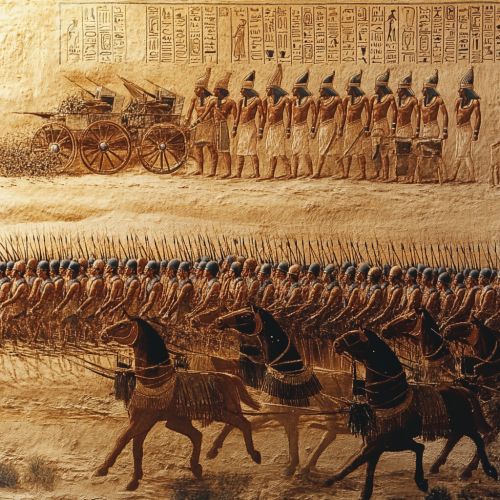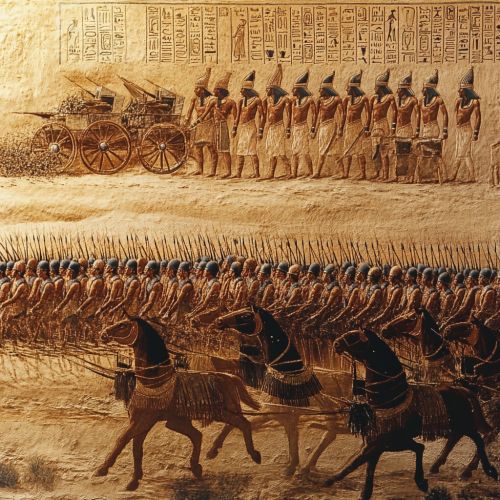Battle of Kadesh
Introduction
The Battle of Kadesh, fought around 1274 BCE, is one of the most well-documented military engagements of the ancient world. It took place near the city of Kadesh, located in present-day Syria, between the forces of the Egyptian Empire under Pharaoh Ramesses II and the Hittite Empire led by King Muwatalli II. This battle is significant not only for its scale and the tactical maneuvers employed but also for the wealth of historical records that provide insights into the military strategies, political context, and aftermath of the conflict.
Historical Context
The late Bronze Age was a period marked by the rivalry between the Egyptian and Hittite empires for control over the Levant, a region of strategic and economic importance. The Hittites, having expanded their influence under the leadership of Muwatalli II, sought to consolidate their power in the region, while the Egyptians, under the ambitious Ramesses II, aimed to reclaim territories that had been lost during previous reigns.
Prelude to the Battle
The lead-up to the Battle of Kadesh involved extensive preparations by both empires. Ramesses II mobilized a large army, divided into four divisions named after Egyptian deities: Amun, Ra, Ptah, and Seth. The Egyptian forces marched northwards, aiming to surprise the Hittites. However, Muwatalli II had anticipated this move and had positioned his troops strategically around Kadesh.


The Battle
Initial Movements
The battle commenced with the Egyptian army advancing towards Kadesh. Ramesses II, believing that the Hittites were far away, led his Amun division ahead of the main force. This miscalculation was based on false intelligence provided by Hittite spies posing as defectors. As the Egyptians neared Kadesh, the Hittite army launched a surprise attack on the Ra division, causing significant chaos and disarray.
Hittite Tactics
The Hittites employed a formidable chariot force, which was a key component of their military strategy. These chariots, manned by three warriors each, were designed for speed and impact, allowing them to break through enemy lines effectively. The initial Hittite assault nearly overwhelmed the Egyptian forces, but Ramesses II managed to regroup his troops and counterattack.
Egyptian Counterattack
Ramesses II's leadership during the crisis was crucial. He personally led a counteroffensive with his elite guard and managed to stabilize the situation. The arrival of the Ptah division further bolstered the Egyptian position, allowing them to push back the Hittite forces. Despite the initial setbacks, the Egyptians managed to hold their ground, preventing a complete rout.
Aftermath
The battle ended in a stalemate, with neither side achieving a decisive victory. Both armies suffered heavy casualties, and the strategic objectives of controlling Kadesh remained unresolved. The aftermath of the battle saw both empires claiming victory in their respective records. Ramesses II commissioned numerous inscriptions and reliefs celebrating his valor and leadership, while Hittite records also portrayed the battle as a successful defense against Egyptian aggression.
Historical Records and Legacy
The Battle of Kadesh is extensively documented in Egyptian sources, including the Poem of Pentaur and the Bulletin, both of which provide detailed accounts of the battle from the Egyptian perspective. These records are invaluable for understanding the military tactics, logistics, and political propaganda of the time. The battle is also depicted in temple reliefs, most notably at the Abu Simbel and Karnak temples.
The legacy of the Battle of Kadesh extends beyond its immediate historical context. It is often cited as one of the earliest examples of detailed military documentation and has been studied extensively by historians and military scholars. The battle also led to the first known peace treaty in history, the Treaty of Kadesh, signed several years later between Ramesses II and Hattusili III, the successor of Muwatalli II.
